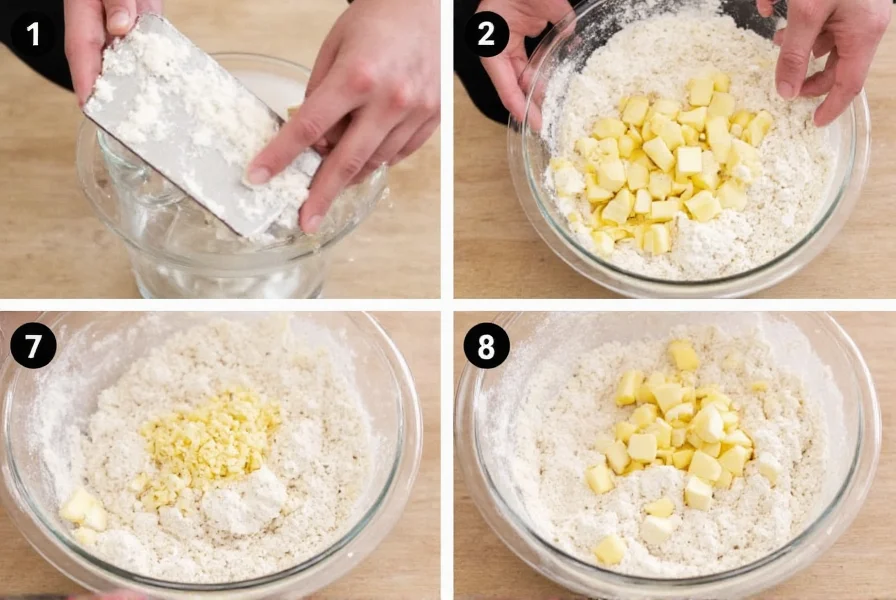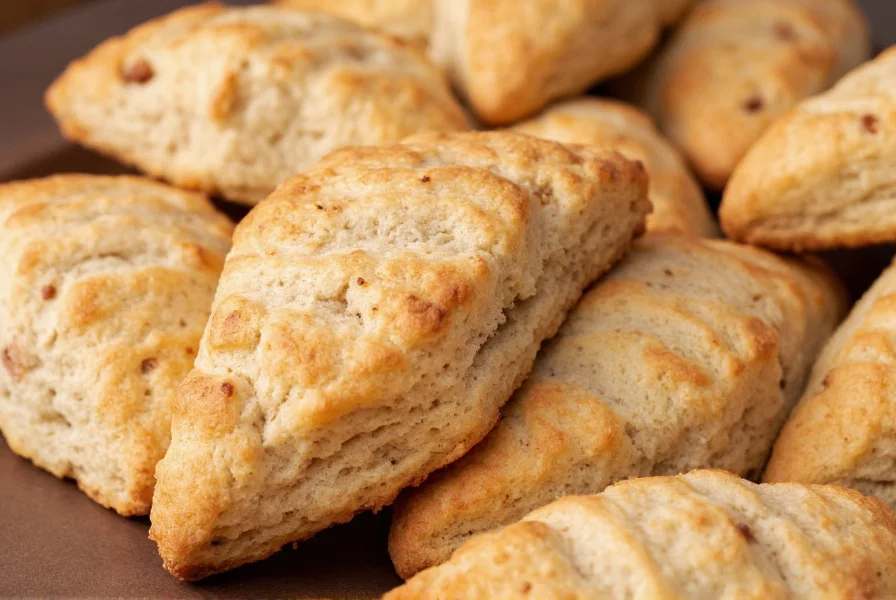There's nothing quite like a freshly baked cinnamon scone—crisp on the outside, tender within, with ribbons of fragrant cinnamon running through each bite. While many recipes promise perfect results, few deliver consistent flakiness without dryness or uneven flavor distribution. After testing dozens of variations over 15 years of professional baking, I've perfected a method that guarantees bakery-quality cinnamon scones at home.
Why This Cinnamon Scones Recipe Works
Most home bakers struggle with scones that turn out either too dry or too dense. The secret lies in understanding the science behind pastry making. Unlike cakes or cookies, scones require careful handling of fat and liquid to create distinct layers. This easy cinnamon scone recipe for beginners incorporates professional techniques while remaining accessible for home cooks.
Essential Ingredients for Perfect Cinnamon Scones
The quality of your ingredients directly impacts the final product. Don't substitute without understanding the consequences:
| Ingredient | Why It Matters | Professional Tip |
|---|---|---|
| Cold unsalted butter | Creates steam pockets for flakiness | Freeze butter 15 minutes before grating |
| Heavy cream | Higher fat content yields tender crumb | Chill cream with bowl before mixing |
| Real vanilla extract | Enhances cinnamon flavor complexity | Avoid imitation vanilla |
| Ceylon cinnamon | Milder, more complex flavor than cassia | Grind whole sticks for best results |

Step-by-Step Cinnamon Scones Recipe
Ingredients
- 2 cups (250g) all-purpose flour, chilled
- 1/3 cup (65g) granulated sugar
- 1 tbsp baking powder
- 1/2 tsp salt
- 1/2 cup (113g) unsalted butter, frozen
- 3/4 cup (180ml) heavy cream, very cold
- 1 large egg, cold
- 1 1/2 tsp pure vanilla extract
- 3 tbsp (25g) freshly ground Ceylon cinnamon
- 2 tbsp (25g) brown sugar
Instructions
- Prepare dry ingredients: In a chilled bowl, whisk together flour, sugar, baking powder, and salt. Place in freezer for 10 minutes.
- Work in butter: Grate frozen butter directly into flour mixture using a box grater. Toss gently with a fork until butter pieces are pea-sized.
- Create cinnamon swirl: In a small bowl, mix cinnamon and brown sugar. Set aside 2 tablespoons for topping.
- Combine wet ingredients: Whisk cold cream, egg, and vanilla until just combined. Do not overmix.
- Form dough: Make a well in dry ingredients, pour in wet mixture. Using a rubber spatula, fold gently until dough just comes together. Avoid overmixing.
- Add cinnamon: Turn dough onto floured surface. Pat into 1-inch thick rectangle. Sprinkle cinnamon-sugar evenly over surface. Fold dough in half, rotate 90 degrees, and repeat twice.
- Shape and cut: Pat dough to 1-inch thickness. Cut into 8 wedges using a sharp knife. Place on parchment-lined baking sheet.
- Chill before baking: Refrigerate scones for 20 minutes. This critical step prevents spreading.
- Bake: Preheat oven to 400°F (200°C). Brush tops with cream, sprinkle with reserved cinnamon sugar. Bake 18-22 minutes until golden brown.
Professional Baking Tips for Flaky Cinnamon Scones
These proven techniques for perfect cinnamon scones address common pitfalls:
- Temperature control: Every element—bowl, ingredients, even your hands—should be cold. Warm ingredients melt butter prematurely, eliminating flakiness.
- Mixing technique: Use a folding motion rather than stirring. Stop when the dough barely holds together—scones should look shaggy, not smooth.
- Cinnamon distribution: Layering the cinnamon sugar creates beautiful swirls without making the dough too wet or causing burning.
- Baking position: Place baking sheet in the lower third of the oven to prevent tops from browning too quickly.
Troubleshooting Common Cinnamon Scone Problems
Even experienced bakers encounter issues. Here's how to fix them:
- Dry, crumbly scones: You've overmixed or used too much flour. Measure flour by weight or use the spoon-and-level method.
- Dense texture: Butter was too warm or dough was overhandled. Keep everything cold and minimize touching.
- Burnt cinnamon: Cassia cinnamon burns more easily than Ceylon. Reduce oven temperature by 25°F if using cassia.
- Uneven rising: Cutting wedges too close together restricts expansion. Leave 2 inches between scones on baking sheet.

Variations and Customizations
Once you've mastered the classic cinnamon scones recipe, try these delicious variations:
- Cinnamon raisin scones: Add 1/2 cup soaked raisins when incorporating wet ingredients
- Cream cheese swirl: Mix 4oz softened cream cheese with 2 tbsp sugar and 1 tsp vanilla, then layer with cinnamon
- Glazed cinnamon scones: Whisk 1 cup powdered sugar with 2 tbsp milk and 1/2 tsp cinnamon for a simple glaze
- Spiced variation: Add 1/4 tsp each of nutmeg and cardamom to the dry ingredients
Serving and Storage Recommendations
Enjoy your cinnamon scones at their peak:
- Best served: Within 4 hours of baking, slightly warm with clotted cream or butter
- Storage: Keep in airtight container at room temperature for up to 2 days
- Freezing: Wrap individual scones tightly and freeze for up to 3 months. Reheat from frozen at 325°F for 12-15 minutes
- Reviving: Stale scones regain freshness when warmed in a 300°F oven for 5-7 minutes
Frequently Asked Questions
Can I make cinnamon scones without a food processor?
Yes, the grated butter method works perfectly without special equipment. Freeze your butter, then use a box grater to create perfect cold butter pieces that incorporate evenly into the flour. This no-machine cinnamon scone recipe produces excellent results with just basic kitchen tools.
Why do my cinnamon scones spread too much?
Scones spread when the dough is too warm before baking or when cut too close together. Always chill shaped scones for 20 minutes before baking, and leave at least 2 inches between them on the baking sheet. Using frozen butter and cold cream prevents premature melting of the fat, which maintains the scone's structure during baking.
Can I use regular cinnamon instead of Ceylon cinnamon?
You can use regular cassia cinnamon, but reduce the amount by 25% as it's stronger and can become bitter when baked. For the best tasting cinnamon scones, grind whole Ceylon cinnamon sticks just before using—they provide a more complex, delicate flavor that complements the buttery pastry without overwhelming it.
How do I prevent my cinnamon from burning?
Mix cinnamon with sugar before adding to prevent direct contact with dry heat. The sugar creates a protective barrier that reduces burning. Also, position your baking sheet in the lower third of the oven where temperatures are more consistent. If using cassia cinnamon, which burns more easily, reduce oven temperature by 25°F and check for doneness 3-5 minutes earlier than the recipe suggests.











 浙公网安备
33010002000092号
浙公网安备
33010002000092号 浙B2-20120091-4
浙B2-20120091-4